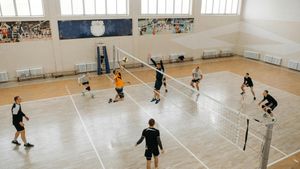The Panama Canal faces significant scrutiny as the Panama Supreme Court has agreed to review the concession granted to CK Hutchison Holdings, which operates two major ports along the waterway. This legal development follows increasing concerns from U.S. authorities, particularly former President Donald Trump, about Chinese influence over the canal, emphasizing its strategic importance for global trade.
CK Hutchison Holdings, owned by billionaire Li Ka-shing, has managed the ports of Cristobal on the Atlantic side and Balboa on the Pacific since 1997. The recent lawsuit, initiated by legal representatives who argue the concession’s “automatic extension” until 2047 is unconstitutional, could potentially alter the management dynamics of this key maritime route. Trump's allegations have raised alarms, fostering assertions from various levels of government about the need to reassess foreign control over this pivotal infrastructure.
Trump claimed, "China is effectively operating the canal," during discussions about U.S. interests, which has now prompted Panama's government to take steps toward auditing the Panama Ports Company, the subsidiary managing these ports.
These legal woes are occurring simultaneously with substantial infrastructural developments on the canal itself. The Panama Canal Authority recently approved funds for the construction of a new artificial lake, aimed at enhancing the functionality of the waterway. With the canal spanning over 80 kilometers, it is indispensable for connecting the U.S. East Coast to Asia, stewarding about 5 percent of global maritime trade.
Last year, the canal experienced notable disruptions, with the number of transits plummeting by 20 percent due to severe drought conditions which depleted water levels. The artificial lake project is not merely intended to improve canal operations, but also aims to secure water availability for over half of Panama's population, underscoring the importance of this development for both economy and ecology.
"The project aims to not only improve canal operations but also secure water availability for over half of Panama's population," stated the Panama Canal Authority, reflecting the dual focus on operational resilience and community welfare.
While the judicial proceedings concerning the CK Hutchison concession remain contentious, the concurrent infrastructural enhancement highlights Panama’s proactive stance toward managing its resources amid external and internal challenges. This combination of legal challenge and infrastructural development could signal either turbulence or opportunity for one of the world’s most significant trade arteries.
With these developments underway, the future of the Panama Canal is poised at a crossroads, balancing the scales of foreign influence with local governance and sustainable management practices. Both the legal pressures and the new infrastructural projects present opportunities to redefine Panama's interaction with its waterway, potentially positioning the nation as a model for other countries facing similar dilemmas.



